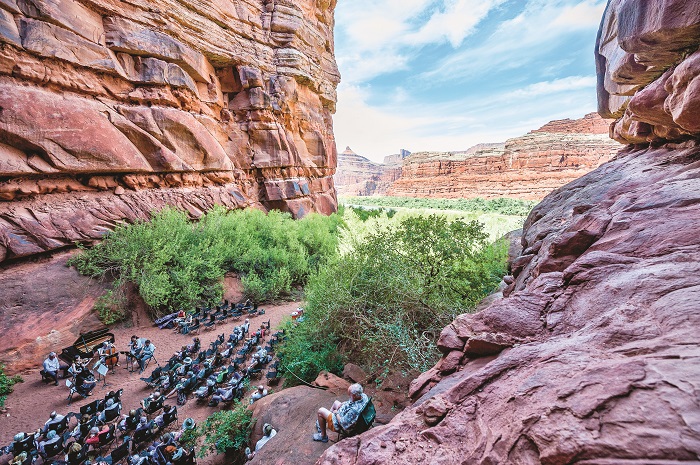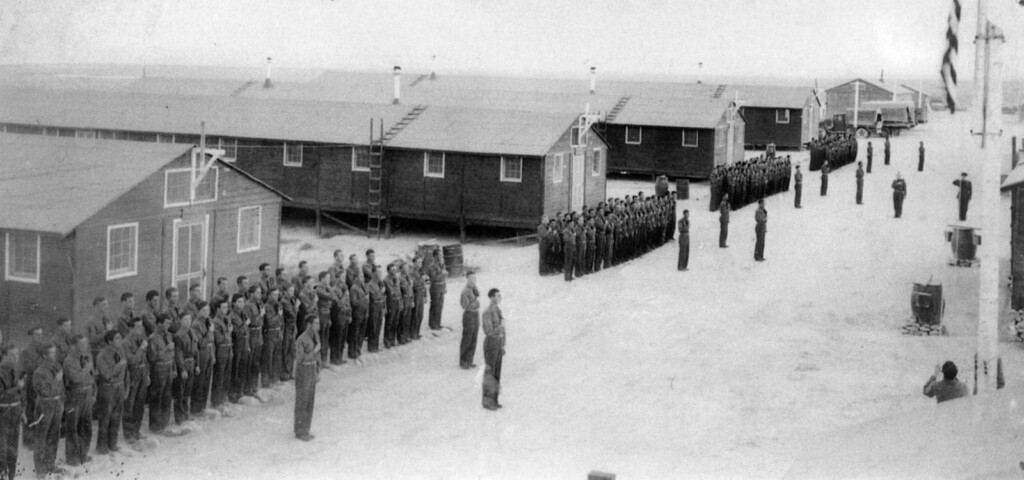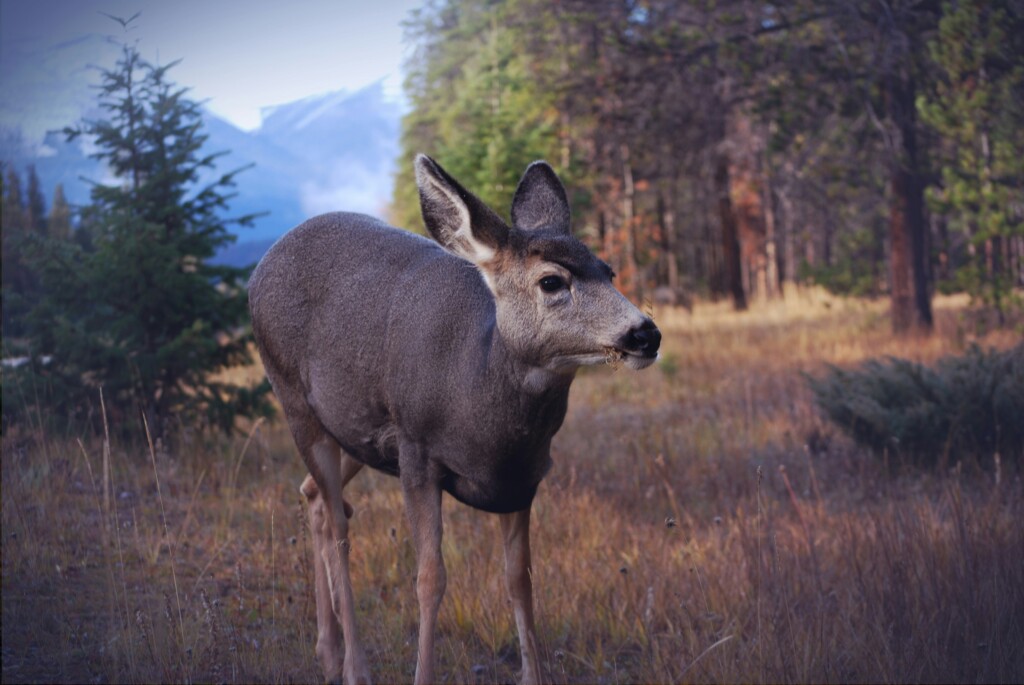
The cliff walls that surround us required ten million years to form. Gravity, pressure, wind, water, and most significantly, time, were all required to produce the dark crimson, black-stained, sandstone walls with ferns growing out of mossy cracks.
The Sitka spruce wood fibers in a Stradivarius violin have melded with the beetle-abdomen varnish to produce a richness in the tone unique to the 300-year-old instruments. Both stone and wood are unmatched by anything that can be created quickly.
But what would a Stradivarius violin sound like in a 10-million-year-old concert hall canyon if played by some of the best musicians in the world? Michael Barrett and Leslie Tomkins asked this question 24 years ago when the Moab Music Festival was in it’s infancy. It was then, in 1992, that he convinced Tag-A-Long Adventures to put a 3,000 pound piano on their boat and haul it down river to a canyon called The Grotto.
He persuaded musicians to get on a boat, float to a secluded spot with cellos and violins, and set up in a place where mostly snakes and bats live. Then he had to sell tickets. “Who would come?” was an obvious concern. Would the posh, high-class, big-city concert hall attendees risk getting dirty to come here?
Barrett begins his concerts with one minute of silence. We hear a persistent drip of water, then starlings chirping near the Colorado River just a few hundred feet away. A breeze rustles the cottonwoods and foxtail willows. The music begins.
 Johann Sebastian Bach’s genius compositions are much better appreciated live. To bring these world-class musicians—many trained in Julliard in New York—to this place, not to mention their instruments, including a massive Steinway and Sons piano, is nothing short of amazing. I’m in awe.
Johann Sebastian Bach’s genius compositions are much better appreciated live. To bring these world-class musicians—many trained in Julliard in New York—to this place, not to mention their instruments, including a massive Steinway and Sons piano, is nothing short of amazing. I’m in awe.
Perched on an upper level, I’m looking down at the eight musicians. The music enters the ears, resonates in the body, and causes the toes to tingle. Bach’s concertos were composed nearly 400 years ago; several were commissioned by the Lutheran church to be performed in churches and cathedrals, not in the traditional Latin, but in German. Two pieces are accompanied by renowned Baritone singer, Jesse Blumberg. This natural cathedral is an ideal setting. The music doesn’t echo, but resonates in the box canyon. The acoustics are as amazing as I was told they would be.
Bach’s very old music was performed in this Moab canyon on instruments old and new by young musicians before a mostly mature audience. The support staff were festival administrators, local Moab volunteers, and Tag-A-Long Guides. The poison ivy along the trail was held back with nylon rope, and arts patrons were assisted in exiting the flat bottom speed boat that brought us here. The effect was producing “a very special moment,” as Michael Barrett described it. A concert where the audience was enraptured—where a culmination of forces and vision joined to make this moment possible.
Barrett tells us about Bach’s life and the story behind each of the six compositions that follow. A few are familiar. I’ve never been an avid listener of classical music, but this is indeed special.
The way Barrett explains how some of Bach’s compositions were rejected by Margrave Christian Ludwig of Brandenburg-Schwedt in 1721—a potential financier of his unconventional works—and we listen to the rejected compositions.
Bach’s Brandenburg Concertos are among his most famous, but never have I heard the excited strings and “Baroque grandeur” harmonies of six-string instruments with a piano like this.
Bach lived at the height of the Protestant Reformation not long after the Renaissance began. This could be the theme song for that time. Inhabiting Leipzig, Austria, Bach’s genius wasn’t so much appreciated in his own time, but has stood as a masterpiece for the ages.
Will this venue continue for another 25 years? I’m certain that even the bats and snakes look forward to to this annual concert. What better way to appreciate the natural wonder even more, through the mission of the Moab Music Festival’s theme, “Music in concert with the landscape.”
I was enraptured from beginning to end; taken in by “the moment” Barrett and his wife Leslie Tomkins worked 24 years to achieve. I’m a lucky interloper. I volunteered to serve wine to guests, thanks to my friend Will Fryer, the owner of Castle Creek Winery, who donates wine every year to the event.
At the conclusion, I felt incredibly fortunate to have the opportunity to attend such an event. After witnessing it myself, I believe it is well worth the $400 ticket price for those who come. It was, without a doubt, the most magical concert I’ve ever witnessed.





